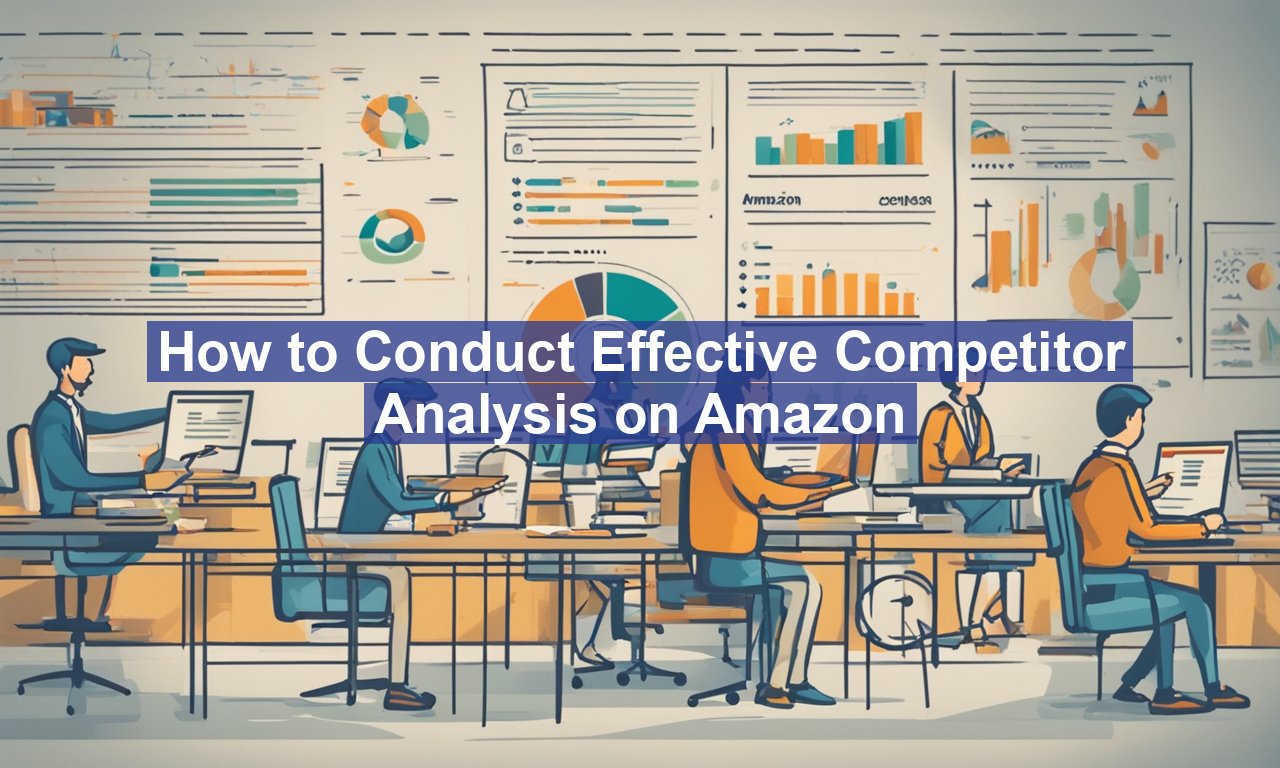How to conduct effective competitor analysis on Amazon In the ever-evolving world of e-commerce, Amazon stands as a formidable marketplace teeming with competition. But, like any competitive landscape, there lies an opportunity for those who know how to analyze their competitors effectively. Conducting a thorough competitor analysis on Amazon can spell the difference between hovering in the shadows and harnessing the spotlight. Whether you’re a budding entrepreneur or an established seller, understanding the nuances of your competition can illuminate paths to greater visibility and higher sales.
This guide will walk through the essential steps and tools needed for a successful competitor analysis strategy on Amazon.
Why is Competitor Analysis Crucial?
Conducting a competitive analysis is not just an optional strategy—it’s indispensable. This practice allows you to:
- Identify market gaps: Spotting areas underserved by your competitors can help you position your products more effectively.
- Understand pricing strategies: By observing competitors, you can craft pricing strategies that attract customers while maintaining your profit margins.
- Improve product offering: Learn what customers appreciate or dislike about similar products and adjust your offerings accordingly.
Step-by-Step Guide to How to Conduct Effective Competitor Analysis on Amazon
Step 1: Identify Your Competitors
To get started, it’s essential to pin down exactly who your competitors are. Use Amazon’s search function, entering keywords related to your product. Look for products with high visibility in search results.
- Direct Competitors: Sellers offering the same or very similar products.
- Indirect Competitors: Sellers offering products that fulfill the same need but are different in nature.
Step 2: Analyze Product Listings
Each detail of your competitor’s product listing provides data. Key elements to analyze include:
- Product Titles: How do they use keywords? Are their titles clear and descriptive?
- Bullet Points and Descriptions: What benefits and features do they highlight? Do they address customer pain points effectively?
- Images: Are their visuals high-quality and do they showcase the product from multiple angles?
Step 3: Evaluate Customer Reviews
Customer reviews are a powerful source of feedback and insight. For each competitor product:
- Ratings: What is the average customer rating? How consistently do they maintain this rating?
- Feedback: What are customers praising or complaining about? Negative reviews can illuminate potential pitfalls to avoid.
For further understanding of analyzing reviews, consider referring to this comprehensive guide on maximizing customer reviews.
Step 4: Monitor Pricing Strategies
Pricing is a critical component of any e-commerce strategy on Amazon. Observing your competitor’s pricing strategies can offer insights into market expectations.
- Price Points: What are the typical price ranges for similar products?
- Promotions and Discounts: How frequently do your competitors run promotions? What are their flash sales or seasonal discounts?
Integrating tools that track competitor pricing trends can be beneficial. Platforms like CamelCamelCamel allow users to monitor price changes over time, helping sellers make informed decisions.
Step 5: Examine Keyword Usage
Keywords are the linchpin of Amazon SEO. Performing a keyword analysis helps understand what brings competitors’ products to the forefront.
- Research Tools: Utilize Amazon keyword research tools like Helium 10 or Jungle Scout to identify profitable keywords your competitors use.
- Backend Search Terms: While you can’t see competitor backend terms directly, you can deduce them by identifying what keywords bring up their listings.
Step 6: Assess Marketing and Branding Tactics
Effective marketing differentiates successful sellers. Delve into how competitors brand their products:
- Brand Story: Do they share a compelling brand story on their Amazon storefront or product pages?
- Cross-platform Marketing: How do competitors leverage social media, email marketing, or other platforms to drive traffic to Amazon listings?
To deepen your understanding of Amazon marketing techniques, read more from this Amazon marketing guide.
Tools to Enhance Competitor Analysis
While many of the above strategies can be performed manually, several tools can streamline the process and offer in-depth insights:
- Jungle Scout: An excellent tool for product research and competitor analysis.
- Helium 10: Comprehensive software suite for keyword research, review analysis, and much more.
- Keepa: Tracks historical price data and provides insights into pricing strategies.
Final Thoughts
In the bustling Amazon marketplace, staying ahead means staying informed. A rigorous competitor analysis isn’t just about knowing who you’re up against—it’s about discovering opportunities for your brand to excel. With the right strategies and tools, you’ll not only uncover the secrets of your competitors but also carve out your own unique path to success.
By continually refining your analysis techniques and remaining adaptable, you’ll be well-equipped to navigate the competitive Amazon terrain successfully. As you embark on this journey, embrace the lessons each competitor provides, refining your strategy to consistently meet and exceed customer expectations.


